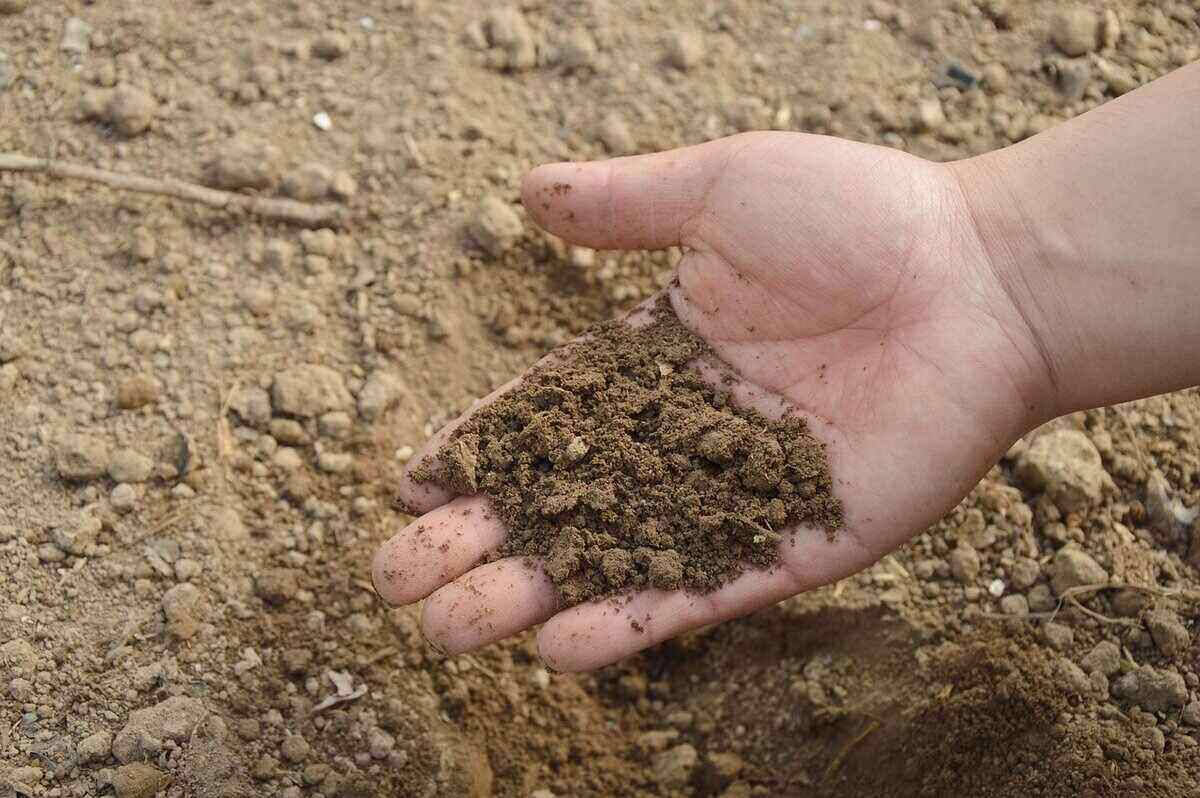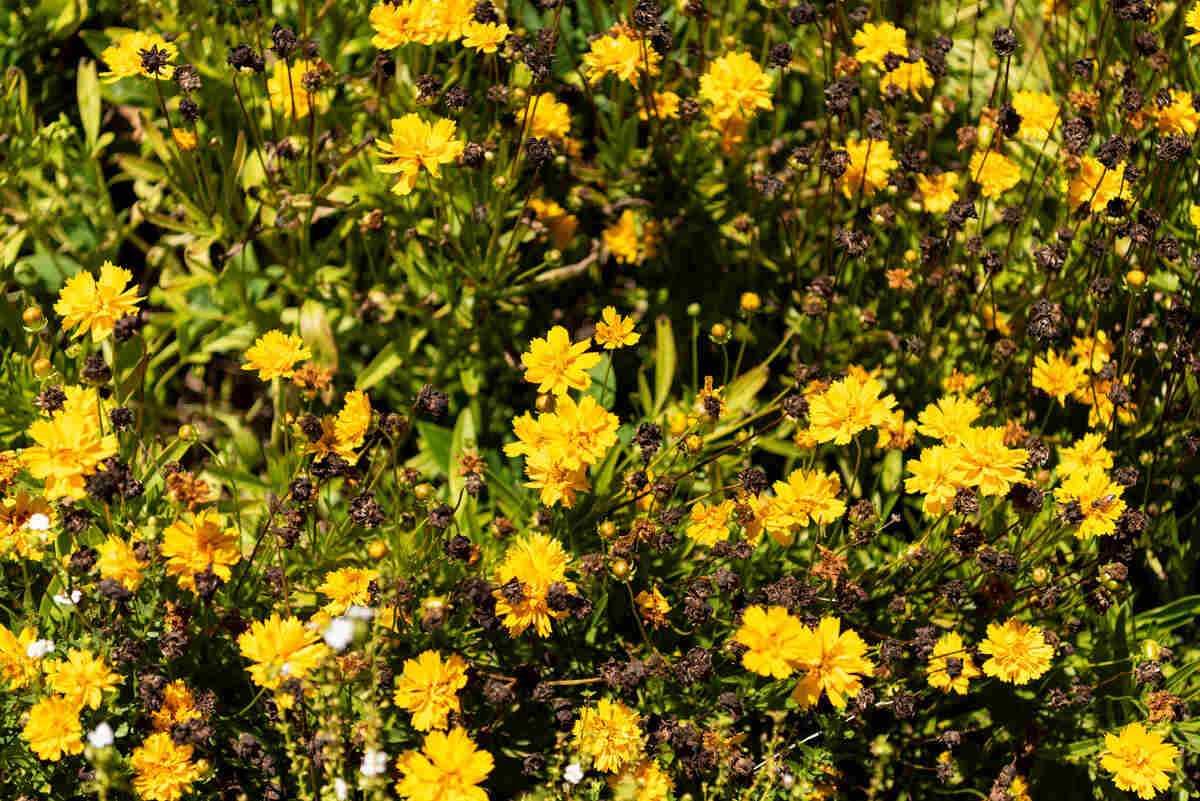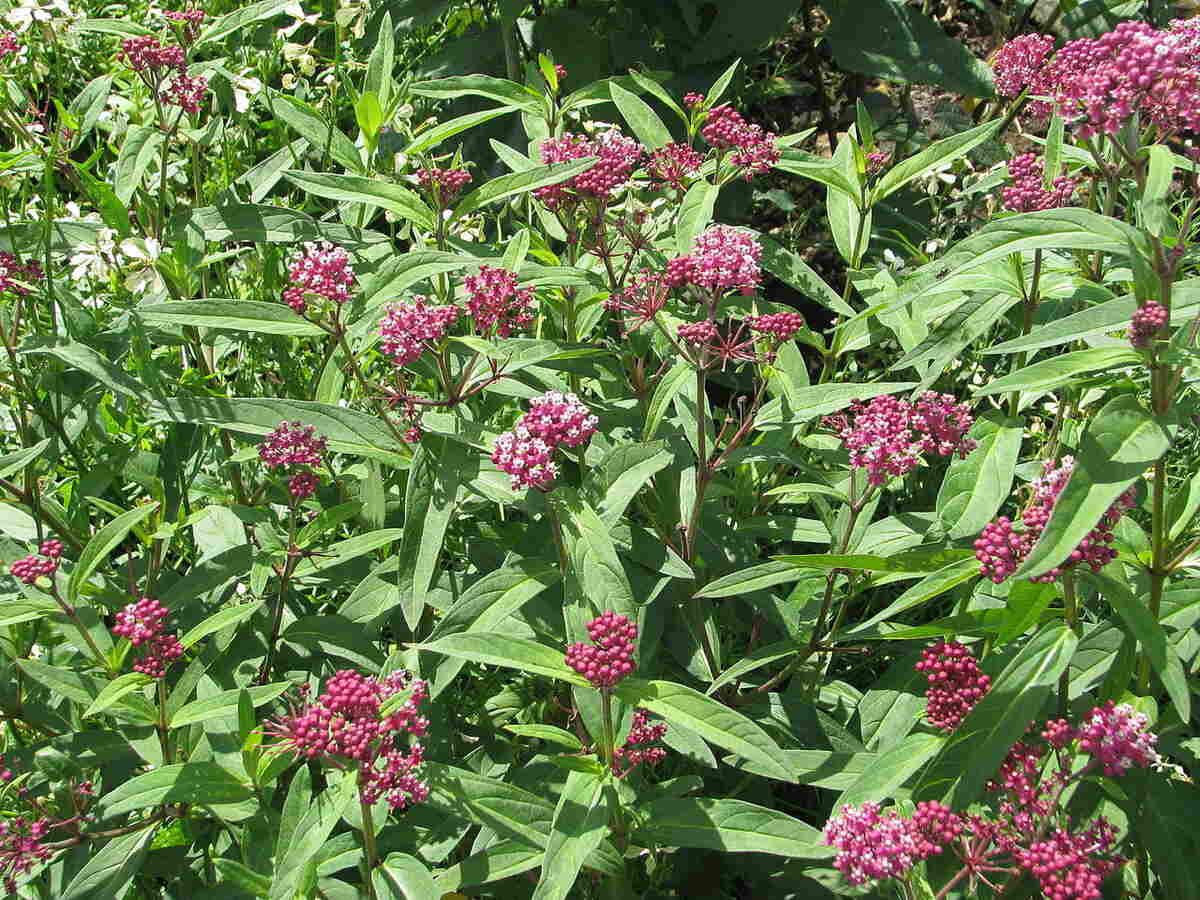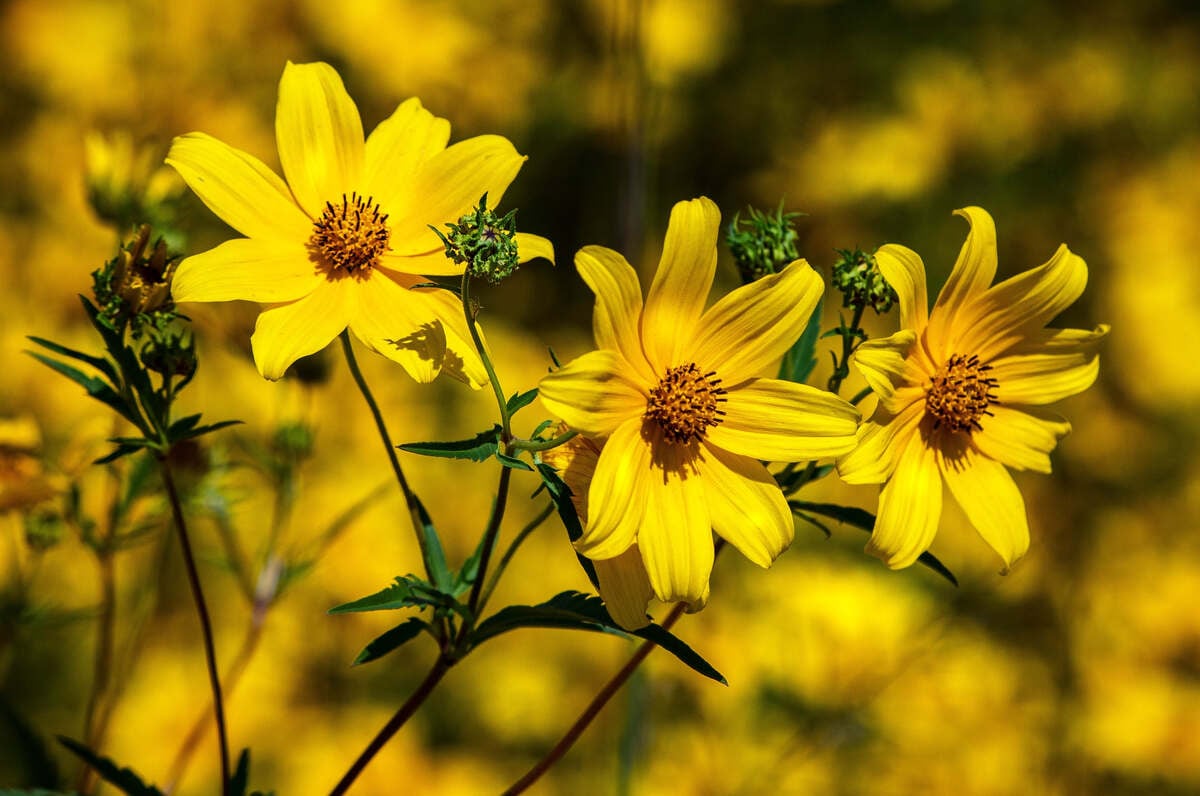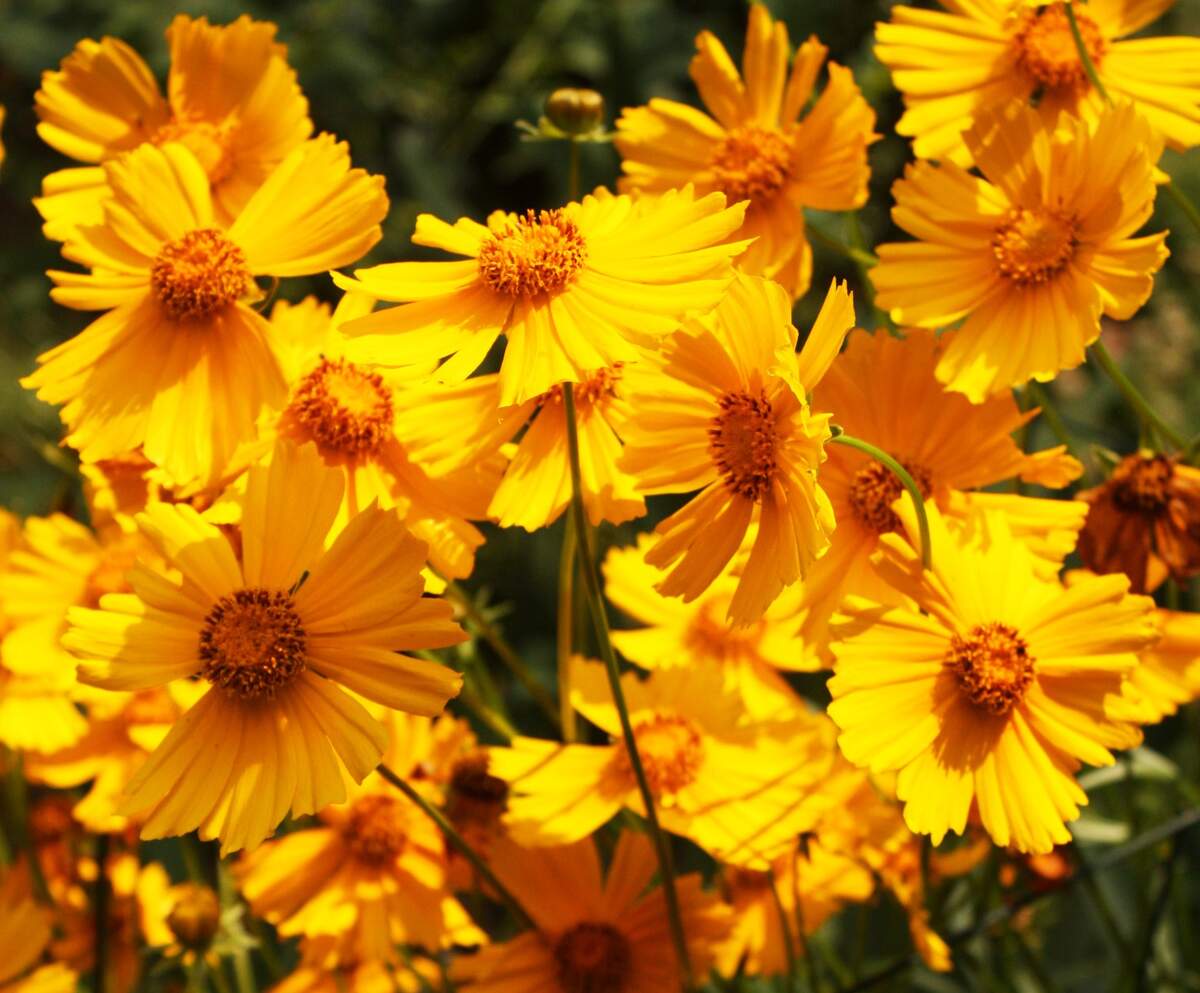
A garden full of native flowers can be a breathtaking sight. And using native plants is a win-win: Mother Nature has done her best work adapting the plants to Oklahoma’s climate and ecosystem. For homeowners, this means less maintenance and expense with fertilizers and pesticides. That’s why we bring you 10 Oklahoma native plants for your gardening adventures.
What are Native Plants?
Native plants occur naturally in their ecoregion, where they have evolved and adapted to the unique climate, soil, and water conditions of that location. This adaptation makes them essential for maintaining the overall health and functioning of the local ecosystem since they also provide shelter and sustenance for wildlife and attract pollinators.
Native Oklahoma Flowering Plants
Indian Blanket (Gaillardia pulchella)
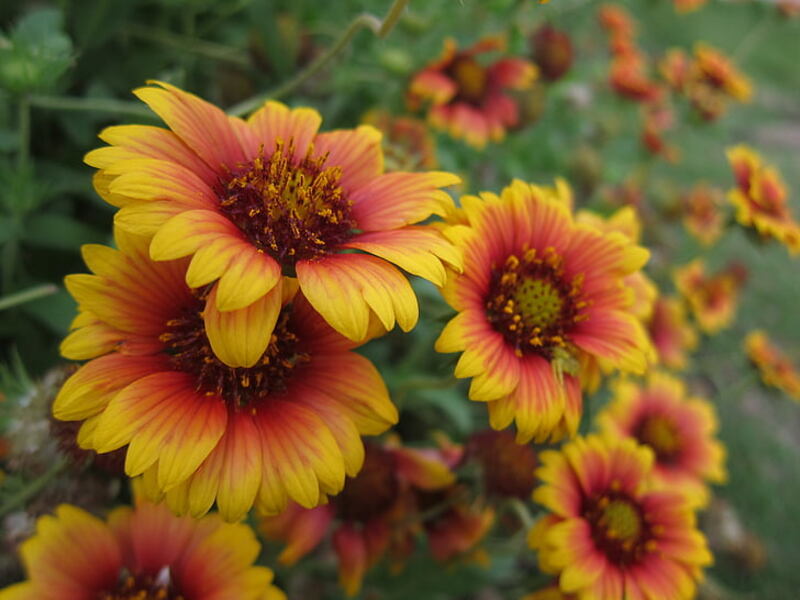
Kicking off our selection is a beautiful ground cover option. Also known by firewheel or rose-ring gaillardia, the Indian blanket is a familiar sight across the western two-thirds of Oklahoma. Besides its stunning blend of vibrant red and yellow, another advantage of this wildflower is that bees and butterflies will certainly visit your garden.
- Plant type: Flowering plant
- USDA Hardiness Zone: 2 to 11
- Sun: Full sun
- Soil: Adapted to a variety of soils, it prefers sandy, occasionally dry soil
- Duration: Annual
- Foliage: Deciduous
- Bloom time: May-August
- Water needs: Dry to moderate
- Mature size: 1 to 1.5 feet tall and 0.5 to feet wide
- Potential hazards: It can cause skin irritation when in direct contact.
Green Antelopehorn Milkweed (Asclepias viridis)
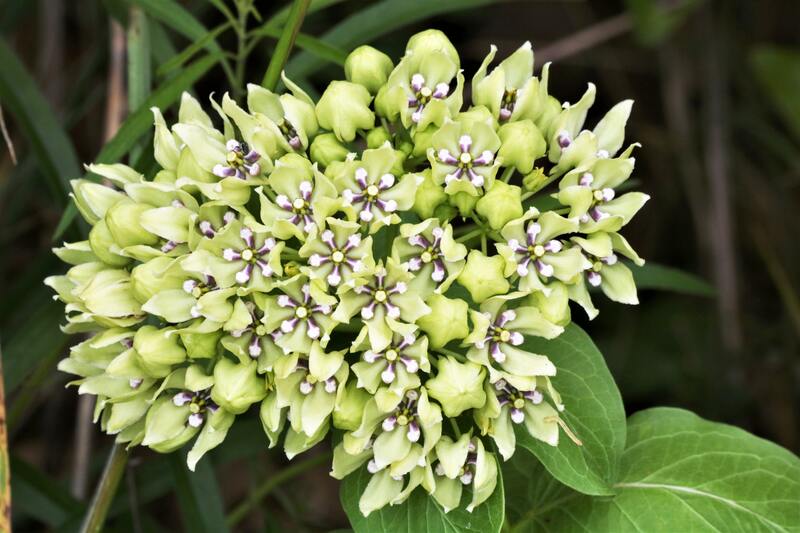
From late spring to mid-summer, this drought-tolerant flower can be spotted adorning the open prairies of central and eastern Oklahoma. Not only does green antelopehorn milkweed enhance your yard’s aesthetics, but it also plays a crucial role in the environment: As the most important host for monarch butterflies (an endangered species), this plant will help create a habitat for these beauties in your garden.
- Plant type: Flowering plant
- USDA Hardiness Zone: 5 to 9
- Sun: Full sun
- Soil: Clay and loamy soils
- Duration: Perennial
- Foliage: Deciduous
- Bloom time: May and July
- Water needs: Low to moderate
- Mature size: 1.5 to 2.5 feet tall and 1 to 2 feet wide
- Potential hazards: Poisonous plant, dangerous to cattle, horses, and sheep.
Purple Coneflower (Echinacea purpurea)
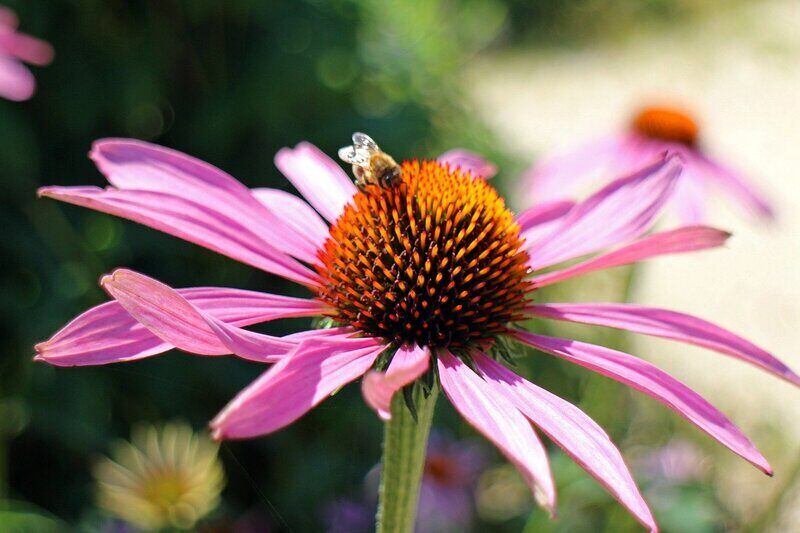
A favorite among native bees, this delicate wildflower originates from the tall grass prairies of the Sooner State. Purple coneflower blossoms with lavender-purple flowers from early summer to mid-fall, enticing butterflies while its seeds feed local birds. Whether as a border or in groupings, purple coneflower serves as a charming addition that any gardening enthusiast will love.
- Plant type: Flowering plant
- USDA Hardiness Zone: 3 to 8
- Sun: Full sun, partial shade
- Soil: Sandy
- Duration: Perennial
- Foliage: Deciduous
- Bloom time: April – September
- Water needs: Medium
- Mature size: 2 to 5 feet tall and 1.5 to 2 feet wide
- Potential hazards: None
Blue False Indigo (Baptisia australis)
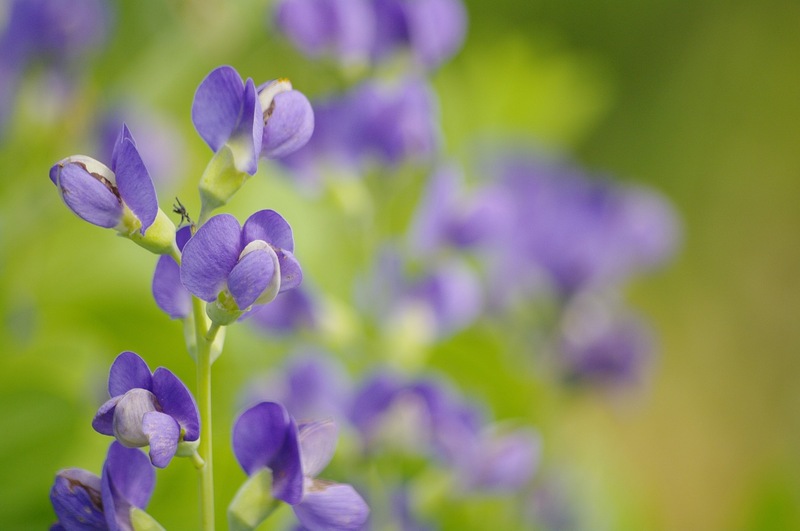
Distributed across the state, the blue false indigo, also called blue wild indigo, is a perennial of the pea family that grows wildly in prairies, open woods, and roadsides. Its attractive, large, indigo-blue flowers look stunning when planted close to wooden fences. With a long blooming season, this plant is guaranteed to enrich your garden with a touch of its unique color.
- Plant type: Flowering plant
- USDA Hardiness Zone: 3 to 9
- Sun: Full sun
- Soil: Loam, sand
- Duration: Perennial
- Foliage: Deciduous
- Bloom time: April – June
- Water needs: Low to moderate
- Mature size: 3 to 4 feet tall, with the same width
- Potential hazards: Toxic if ingested.
Tickseed (Coreopsis verticillata)
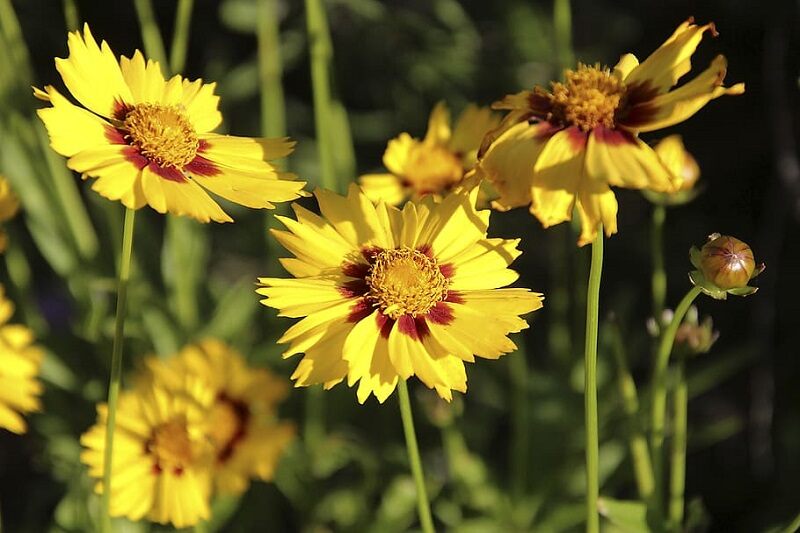
With populations throughout Oklahoma, this charming herbaceous perennial is a delightful addition to any garden. Tickseed’s daisy-like blossoms are commonly cheerfully yellow, attracting bees and other pollinators. Its blooming period extends from late spring through summer, bringing joy and charm to any outdoor space.
- Plant type: Flowering plant
- USDA Hardiness Zone: 3 to 9
- Sun: Full sun
- Soil: Well-drained, poor, sandy soil
- Duration: Perennial
- Foliage: Deciduous
- Bloom time: May to July
- Water needs: Low to moderate
- Mature size: 2 feet tall and 2 feet wide
- Potential hazards: Tickseeds are non-toxic
Mealycup Sage (Salvia farinacea)
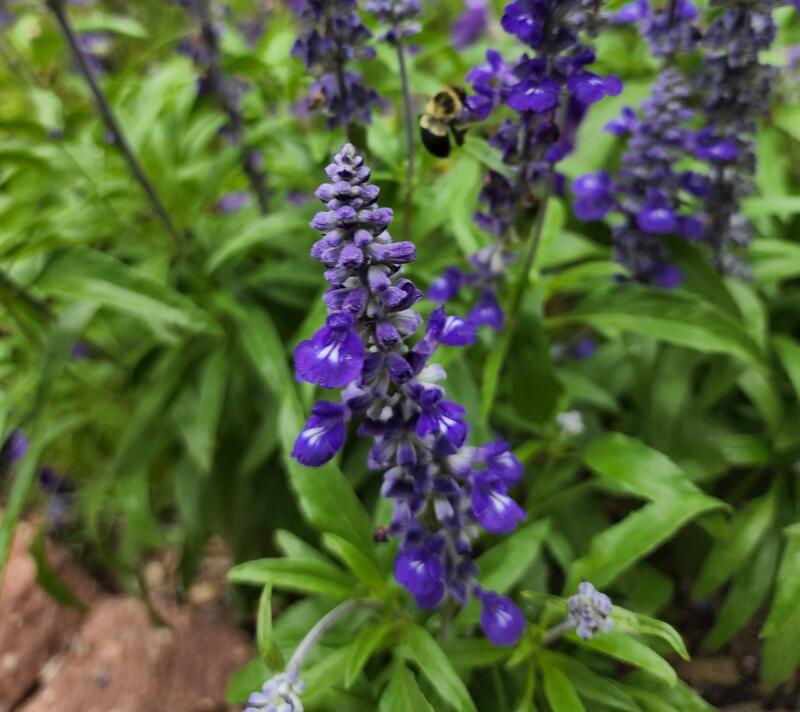
Looking for another option to use as a bedding plant? Mealycup sage is a great option for drought-tolerant ornamental gardens. With various shades of blue and purple, its nectar attracts bees, butterflies, and hummingbirds. This native flower offers long-lasting color and requires minimal upkeep in residential landscape designs.
- Plant type: Flowering plant
- USDA Hardiness Zone: 7 to 10
- Sun: Full sun to part shade
- Soil: Moist sand, loam, or clay soil
- Duration: Tender perennial or annual
- Foliage: Evergreen
- Bloom time: April to October
- Water needs: Low, drought-tolerant
- Mature size: 2 to 3 feet tall, with the same width
- Potential hazards: It’s non-toxic but not recommended for human consumption. Susceptible to powdery mildew.
Arkansas Bluestar (Amsonia hubrichtii)
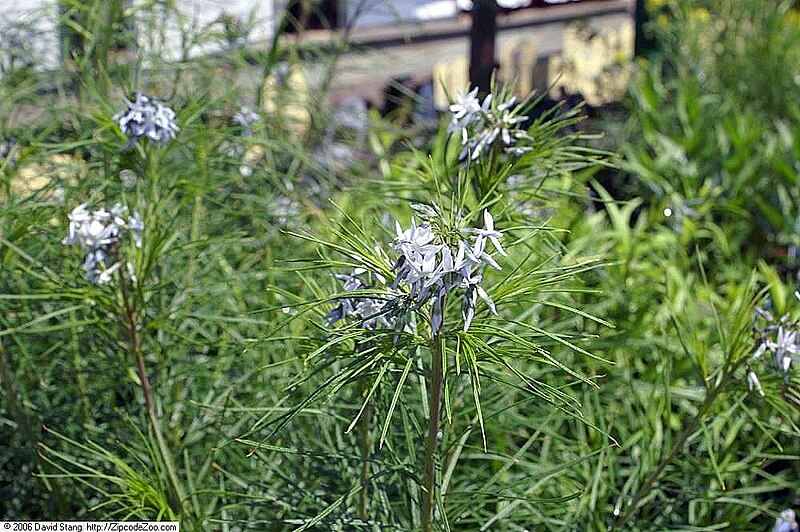
The Arkansas bluestar, native to eastern Oklahoma, grows well across the entire state. Its lovely star-shaped flowers bloom with a captivating sky-blue color each spring. As autumn arrives, the green foliage transforms into a vibrant, striking yellow. These plants are a wonderful addition, as their leaves gracefully sway when “the wind comes sweepin’ down the plain.”*
- Plant type: Flowering herb
- USDA Hardiness Zone: 4 to 9
- Sun: Full sun to partial shade
- Soil: Moist soil, well-drained soil
- Duration: Perennial
- Foliage: Deciduous
- Bloom time: April to May
- Water needs: Moderate
- Mature size: 3 feet tall and 2 to 3 feet wide
- Potential hazards: When cut, the plant produces a milky fluid that can cause skin irritation.
Native Oklahoma Grasses
Little Bluestem Grass (Schizachyrium scoparium)
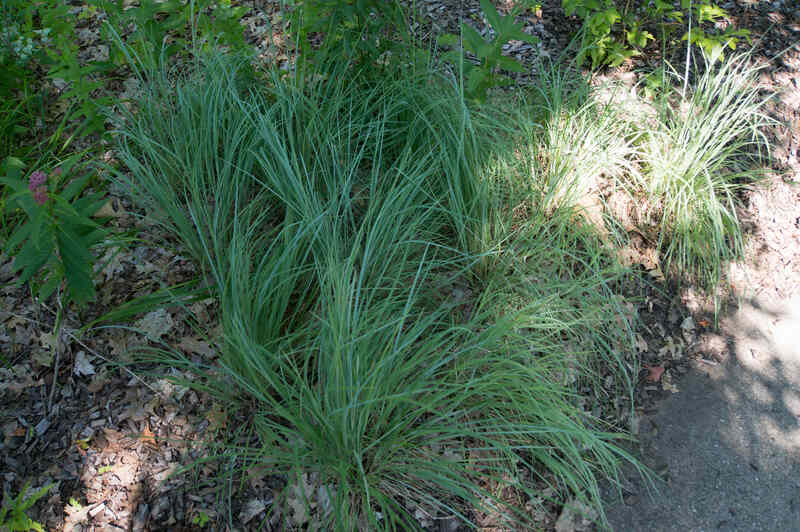
Growing throughout Oklahoma, this warm-season ornamental native grass is the definition of low maintenance. Self-seeding, little bluestem provides year-round ground cover. During the fall seasons, it displays a captivating orange color, complemented by delicate silvery flowers, enhancing the landscape’s beauty. It also attracts pollinators such as butterflies and moths.
- Plant type: Ornamental grass
- USDA Hardiness Zone: 3 to 9
- Sun: Full sun
- Soil: Dry to moist, well-drained soils
- Duration: Perennial
- Foliage: Deciduous
- Bloom time: August – February
- Water needs: Low
- Mature size: 2 to 4 feet tall, with the same width
- Potential hazards: Not poisonous.
Switchgrass (Panicum virgatum)
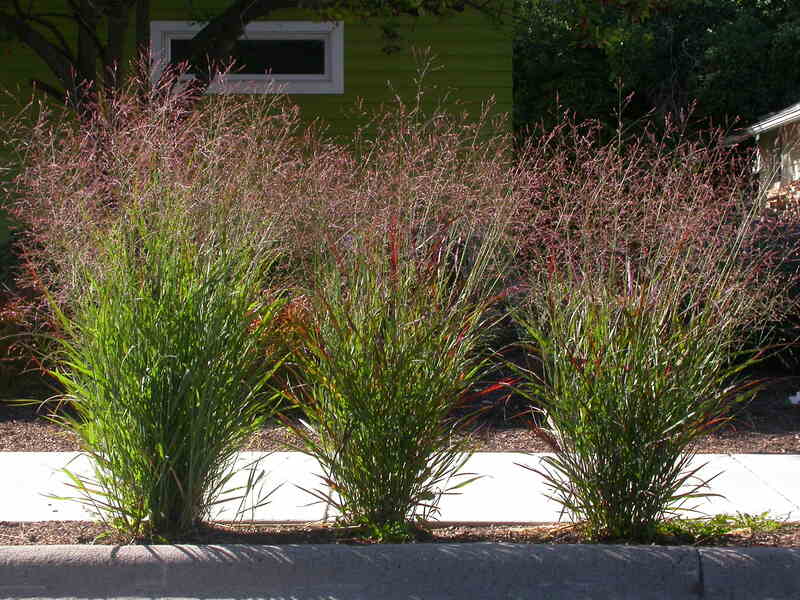
Perfect for screens or used as an accent plant in your garden, this narrow-leaf warm-season grass excels throughout the Great Plains. Tolerant to drought and erosion, the arching blue-green foliage turns orange during fall and survives upright during winter. Just make sure to plant at a considerable distance from your home, since it is highly flammable.
- Plant type: Ornamental grass
- USDA Hardiness Zone: 5 to 9
- Sun: Full sun, partial shade
- Soil: Sandy, loamy, clay, limestone-based
- Duration: Perennial
- Foliage: Deciduous
- Bloom time: July to February
- Water needs: Medium
- Mature height: 3 to 6 feet tall and 2 to 3 feet wide
- Potential hazards: Toxic to non-ruminant animals.
Native Oklahoma Tree
Caddo Sugar Maple (Acer saccharum ‘Caddo’)
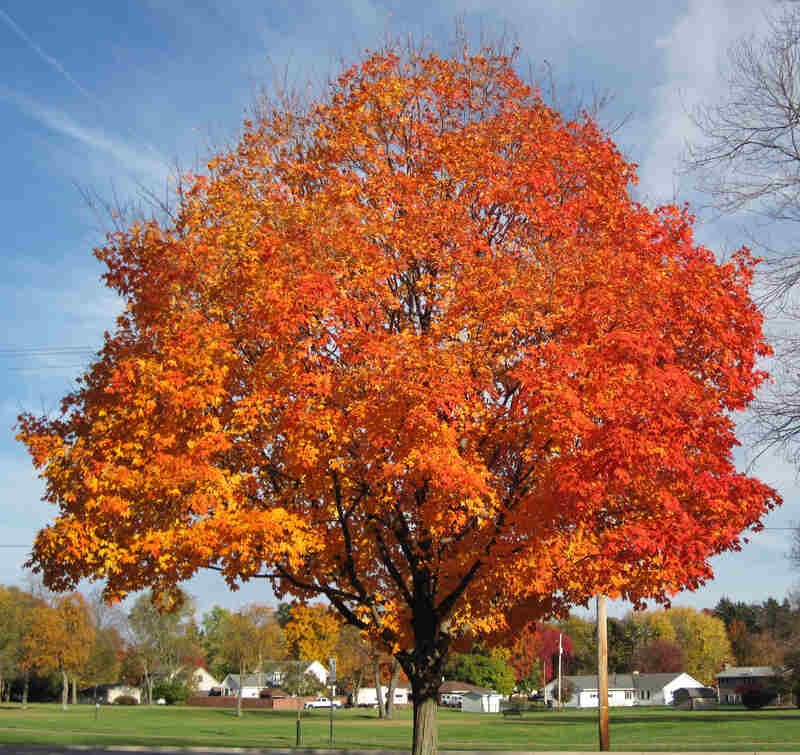
This sugar maple was found in Caddo County in southwestern Oklahoma. The beautiful, dark green leaves are resistant to the region’s heat and drought, and during fall they turn a stunning yellow and golden hue. While it makes a great shade tree for home lawns, it is not recommended for small areas, as you’ll need 24 to 60+ feet of available space to plant this tree.
- Plant type: Tree
- USDA Hardiness Zone: 5 to 9
- Sun: Full sun
- Soil: It prefers well-drained soil, but is also tolerant of dry, high-pH soils.
- Foliage: Deciduous
- Bloom time: April
- Water needs: Moderate
- Mature size: 30 to 50 feet tall and 40+ feet wide
- Potential hazards: Potentially toxic to horses
How to Choose Native Plants for Your Landscape
Oklahoma has “plen’y of heart”* and plen’y of options for you that make landscaping easy peasy for homeowners. To choose the best native plants for your landscape, first, evaluate the conditions of your garden’s area. Such criteria will dictate what species will thrive in your yard:
- Soil condition: Is your soil clay, sandy, or loamy? Is the pH acidic or alkaline? These are determinants when choosing the best options for your garden.
- Sun exposure: Is your yard exposed to full sun, or does it have shaded areas?
- Take a hint from nature: What species naturally grow in your area? Do the wildflowers grow together with shrubs or trees? This native composition can help you choose the species that would make an aesthetically pleasing and resistant landscape.
- Consider your city: A plant that works for one part of Oklahoma might not work for another. For example, you may notice some different plants on our native plant list for Oklahoma City.
Pro tip: Luckily, if it gets too troublesome to decide the composition of your landscape, specialized nurseries offer multiple seed mixes for various aesthetics and different site conditions. And you can always combine options that work for you, such as using a good turfgrass seed for Oklahoma as groundcover and adding native wildflowers in ornamental beds.
FAQ
The oldest tree in Oklahoma is found in the Keystone Ancient Forest and is over 500 years of age.
The official State tree of Oklahoma is the Redbud (Cercis canadensis), designated as such in 1937. With heart-shaped leaves and pink flowers, this tree grows in forests, fields, and valleys throughout the Sooner State.
Oklahoma encompasses the USDA hardiness zones 6a to 8a.
There’s Never Been a Better Time*
…To call a trusted pro to help you out with your native landscaping project. We have the best Oklahoma landscaping pros near you. We have trusted landscaping pros in Oklahoma City, Tulsa, Norman, Edmond, Broken Arrow, and many more cities across the Sooner State.
*Lyrics from the musical Oklahoma!
Main Image Credit: Alabama Extension / Wikimedia Commons / CC0 1.0
